Farsley is a village steeped in history, much of which can be tied into the development of Leeds.
The first documentary reference to Farsley is in the Doomsday Book of 1086, at which time it was part of the Manor of Calverley and Farsley.

|
qqqqqqqqqqqqq
|
|
qqqqqqqqqq
|
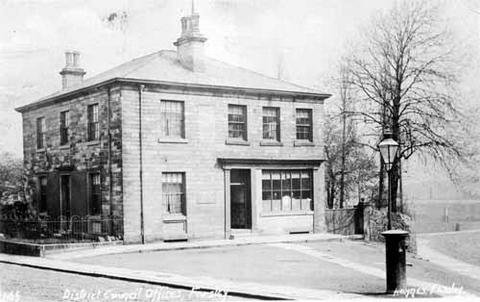
|
Farsley Urban District Council Offices
|
|
These were the original Council Offices and are sited behind the War Memorial. The first Farsley Library was also in this building
|
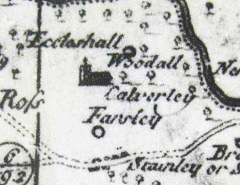
|
John Warburton's map of 1720 highlights that even in the early 18th century Farsley was still relatively undeveloped.
|
|
The place name is thought to have Anglo-Saxon origins and is usually interpreted as 'furze clearing'.
As Farsley was conjoined with Calverley, the people of Farsley used St Wilfrid's Church at Calverley, which is thought to date back at least to the 12th century.
The Medieval village developed first into one of the most important cloth producers in the Leeds area, the prosperity of which allowed Farsley to be heavily influenced by the later industrialization of Britain.
By embracing the industrial revolution the 19th century people of Farsley left a legacy of imposing and important buildings, which shape the important Character, which we see today.
Industrial complexes, terrace rows, religious architecture and large detached houses all stand side-by-side, reminding all that Farsley didn't simply grow in the 19th century, it exploded into the large thriving place which we see today.
Today Farsley's important industrial heritage is still clearly visible on the ground. This combined with the landscape setting helps Farsley retain its independence from its surroundings, despite being now physically connected to surrounding settlements.
|
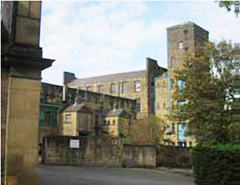
|
The Sunny Bank Mills built (1832) was one of the earliest large scale industrial mills in the village that had always played a large part in the cloth making industry
of Leeds.
|
|
There is also a possibility that a medieval settlement existed in the Bagley area of Farsley, due to it appearing as a personal name in the 1379 Poll Tax returns.
Evidence for settlement around Farsley in the medieval period is also found at Wadland's Farmhouse and Wadland's Cottage to the northwest of the conservation area, once known as Wadland's Hall. A large timber-framed aisled barn once existed here that was thought to date to the late 15th century.
Unfortunately, despite being a Grade II* Listed Building, the barn was demolished in the 1980s. It is thought that Wadland's Hall may not be complete, and that the large 19th century block adjoining the 18th century House may have replaced a medieval house that originally stood there.
It is thought that both the barn and the house may have been associated with a manorial complex.
The increase in industrial prosperity was the main factor for the rapid increase of population in Farsley throughout the 19th century, which increased by almost five times to 5,500 by 1901.
Farsley officially became a parish in its own right in 1844, and became an urban district in 1894.
In 1937 the Borough of Pudsey that in 1972 was itself annexed by Leeds annexed it.
|
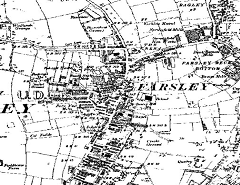
|
This is the 3rd edition of the ordnance survey map produced in (1908) Farsley had undergone massive expansion, the most significant elements of which were the
development of industrial mill complexes, and associated worker's housing.
|
|
Residential properties and historic weaving cottages are still mixed in with the commercial structures, giving the character a sense of history.
This history is reiterated through its piecemeal development, with 18th and 19th century properties located on the medieval street pattern.
The character area also contains many of the key buildings within Farsley. The 19th century Conservative and Liberal clubs and various ecclesiastical buildings stand
mixed in with terrace rows and commercial buildings. It is this variation of architecture and its uses that focus this area as the core of Farsley, in both a historic
and modern sense.
|
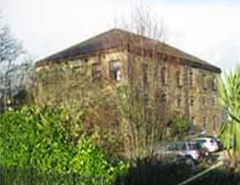
|
The former Rehobeth Baptist chapel (1777) is Farsley's oldest remaining religious building.
|
|
"The village is renowned as the birthplace of Samuel Marsden who, having emigrated to Australia as a chaplain, introduced the first Australian wool to England in 1808. He was subsequently introduced to George III who ordered a suit to be made from the wool. Samuel Marsden was born in the Bagley district of Farsley in 1764 but as a small boy, moved to Turners Fold adjoining Farsley Town Street. The property was demolished in 1923 and in 1934 a monument, appropriately incorporating a sheep's head, was erected on the site. It is set in a small garden now affectionately known as Sheepshead Park"
|









